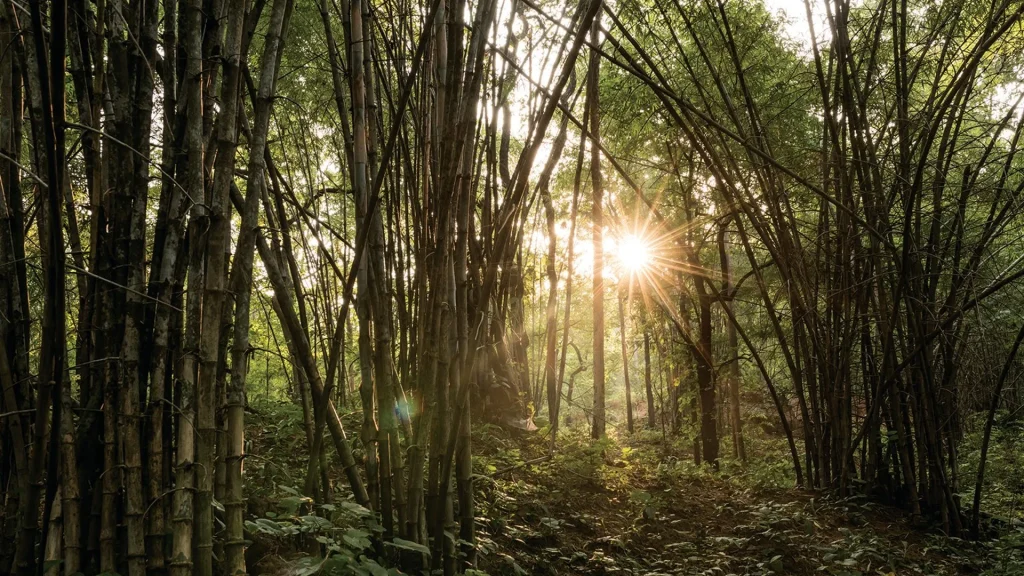Context: The Supreme Court ordered Rajasthan’s Forest Department to map every “sacred grove” in detail using ground surveys and satellite images.

- The Court Stated Sacred Groves should be identified on their purpose and their cultural and ecological significance to the local community”.
- After mapping, the department will classify them as ‘forests’ and notify them as ‘community reserves’ under the Wildlife Protection Act (WLPA) 1972.
- This would place the groves under government control for conservation.
- Rajasthan has about 25,000 sacred groves covering 600,000 hectares.
- India is estimated to have 1-10 lakh sacred groves of this nature, the highest in the world.
About Sacred Groves
- These are forests managed and protected by local communities based on tradition.
- These groves are preserved through customs and rules that usually prohibit resource extraction, except for gathering medicinal plants by designated caretakers.
- The protection of these groves is tied to the community’s religious beliefs and their connection with spirits and gods.
- They are often linked to temples, shrines, burial sites, and pilgrimage spots and are important for local healers who collect medicinal plants and are rich in biodiversity.
- The groves also protect communities from natural disasters like floods and droughts by stabilizing the soil and preventing erosion.
What are Community Reserves?
- The WLPA 2002 created a new protected area category called “community reserves,” along with national parks and sanctuaries.
- Community reserves are protected areas on community or private land where local people voluntarily conserve Forest habitats to protect “fauna, flora, and cultural conservation values and practices.
- The community prevents, any offenses specified in the WLPA and helps the authorities in arresting any offenders, reports the “death of any wild animal,” and prevents or extinguish any forest fires.
Supreme Court’s Recommendation
- The Ministry of Environment, Forest and Climate Change (MoEF&CC) was directed to take the lead in protecting these precious sources of biodiversity by saving the sacred groves while preserving the cultural and traditional rights of the entire community.
- The court stated that the State Government, with local communities, should protect the ecological and cultural value of sacred groves.
- Rajasthan should form a five-member committee including:
- A domain expert (preferably a retired chief conservator of forests),
- A senior officer from MoEF&CC (Union Ministry),
- Senior officers from the forest and revenue departments of Rajasthan.
- It referred to the Forest Rights Act, of 2006, recognizing the cultural practices of tribal communities.
- Rajasthan should identify communities that have historically protected sacred groves and designate them as ‘Community Forest Resources’ under the Forest Rights Act.
- The community’s role in conservation should be formally recognized, and they, along with Gram Sabhas, should be empowered to protect wildlife and natural resources.
- The Ministry of Environment, Forest and Climate Change (MoEF&CC) was directed to create a policy for the governance and management of sacred groves across India.
- MoEF&CC should also develop a nationwide survey plan to identify, locate, and mark the boundaries of sacred groves.
- The boundaries should be flexible for natural growth but strictly protected from reduction due to human activities like agriculture, habitation, or deforestation.
Sacred Groves in different regions of India:
| Region | Name of Sacred Groves |
| Karnataka | Devara Kadu |
| Himachal Pradesh | Devban |
| Kerala | Kavu, Sarpa Kavu |
| Chota Nagpur Plateau | Sarna |
| Chhattisgarh | Devbani |
| Odisha | Jahera, Thakuramma |
| Maharashtra and Chhattisgarh | Devgudi (by Muria, Madia, and Gond Adivasis) |
| Meghalaya | Ki Law Lyngdoh, Ki Law Kyntang, Ki Law Niam |
| Gujarat | Sabarkantha, Dahod, Banaskantha |
| Rajasthan | Orans, Malvan, Deo Ghat, and Baugh |

